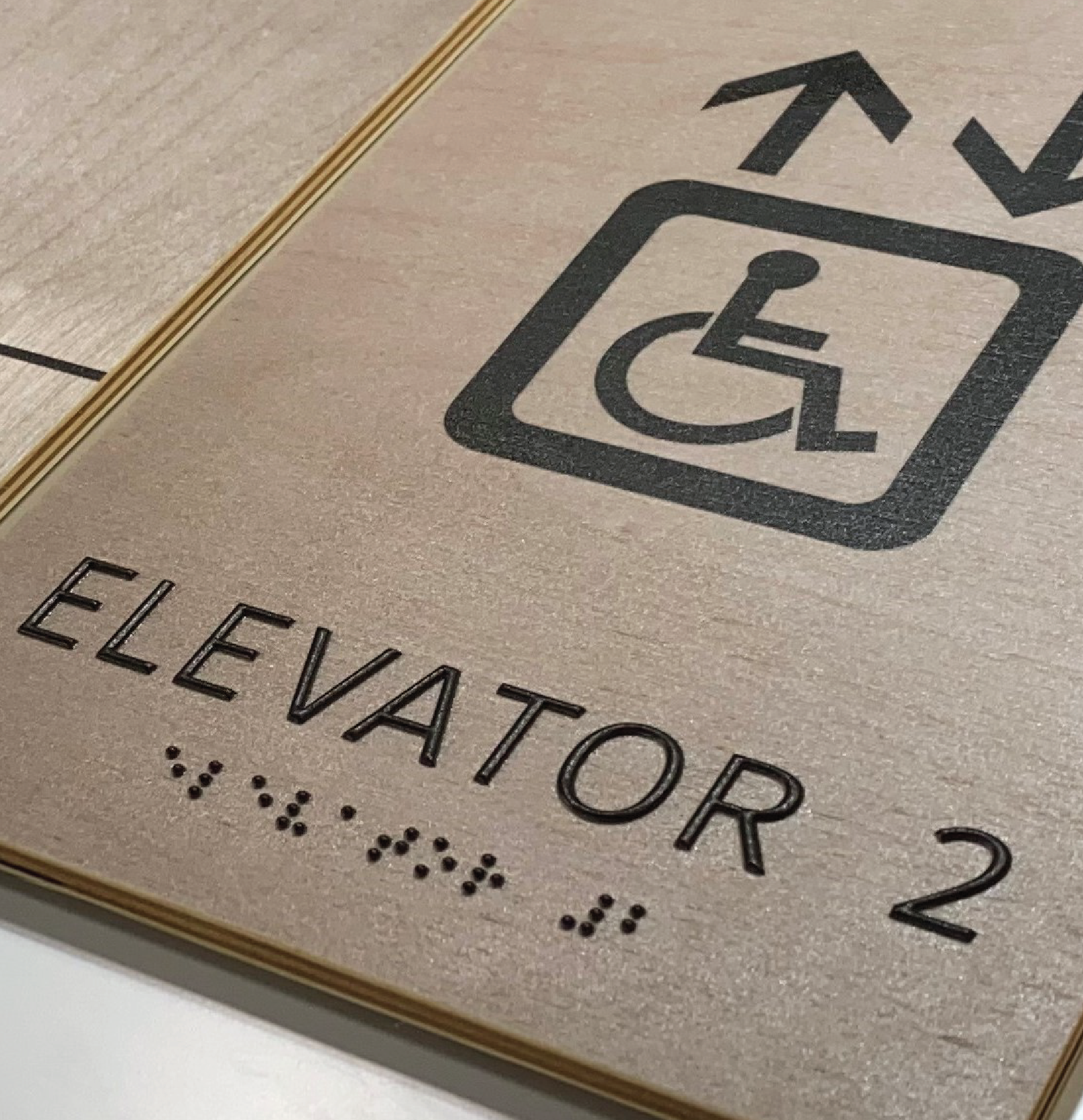ADA Signs: Important Devices for Inclusive Settings
ADA Signs: Important Devices for Inclusive Settings
Blog Article
Checking Out the Secret Functions of ADA Signs for Improved Ease Of Access
In the world of ease of access, ADA signs serve as quiet yet powerful allies, making certain that spaces are comprehensive and navigable for people with handicaps. By integrating Braille and responsive aspects, these signs break barriers for the visually damaged, while high-contrast shade plans and legible font styles provide to diverse visual requirements.
Relevance of ADA Conformity
Making certain conformity with the Americans with Disabilities Act (ADA) is important for fostering inclusivity and equal accessibility in public spaces and offices. The ADA, passed in 1990, mandates that all public centers, companies, and transport solutions suit people with specials needs, ensuring they take pleasure in the very same legal rights and opportunities as others. Conformity with ADA criteria not only meets lawful responsibilities yet likewise boosts a company's online reputation by showing its dedication to diversity and inclusivity.
One of the vital elements of ADA conformity is the implementation of available signage. ADA indicators are created to make sure that people with specials needs can easily browse with areas and buildings. These indications should comply with certain standards regarding size, font style, color contrast, and positioning to assure visibility and readability for all. Appropriately implemented ADA signs assists remove obstacles that people with handicaps usually encounter, thereby promoting their freedom and confidence (ADA Signs).
In addition, sticking to ADA guidelines can minimize the risk of possible penalties and legal consequences. Organizations that fail to adhere to ADA guidelines may encounter legal actions or fines, which can be both financially challenging and harmful to their public image. Therefore, ADA compliance is indispensable to cultivating a fair atmosphere for everyone.
Braille and Tactile Components
The unification of Braille and tactile components right into ADA signage embodies the concepts of accessibility and inclusivity. It is generally placed below the matching text on signage to guarantee that people can access the information without visual support.
Tactile elements extend past Braille and consist of raised icons and personalities. These components are made to be discernible by touch, enabling individuals to determine area numbers, toilets, departures, and other critical areas. The ADA sets certain standards relating to the dimension, spacing, and positioning of these responsive elements to maximize readability and make sure consistency throughout various environments.

High-Contrast Shade Schemes
High-contrast color pattern play a pivotal function in enhancing the exposure and readability of ADA signs for people with visual impairments. These systems are important as they maximize the difference in light reflectance between text and history, making sure that signs are quickly noticeable, even from a distance. The Americans with Disabilities Act (ADA) mandates making use of specific color contrasts to suit those with minimal vision, making it an important facet of compliance.
The efficiency of high-contrast shades hinges on their ability to stand apart in various lights problems, consisting of dimly lit settings and areas with glare. Usually, dark message on a light history or light message on a dark background is utilized to achieve ideal contrast. Black text on a white or yellow background gives a plain aesthetic distinction that assists in quick acknowledgment and understanding.

Legible Fonts and Text Dimension
When thinking about the layout of ADA signs, the option of readable fonts and proper text dimension can not be overstated. The Americans with Disabilities Act (ADA) mandates that typefaces should be sans-serif and not italic, oblique, manuscript, very decorative, or of unusual form.
The dimension of the text likewise plays a pivotal role in access. According to ADA guidelines, the minimal message height should be 5/8 inch, and it must raise proportionally with viewing distance. This is specifically essential in public areas where signage requirements to be read rapidly and precisely. Uniformity in text size adds to a natural visual experience, helping individuals in browsing atmospheres efficiently.
In addition, spacing between letters and lines is integral to legibility. Sufficient spacing avoids personalities from showing up crowded, enhancing readability. By sticking to these criteria, developers can dramatically boost access, making sure that signage serves its designated objective for all people, despite their visual abilities.
Efficient Positioning Strategies
Strategic placement of ADA signs is vital for optimizing ease of access and making certain compliance with legal requirements. ADA guidelines specify that signs need to be mounted at a height in between 48 to 60 inches from the ground to guarantee they are within the line of sight for both standing and seated people.
Furthermore, indicators should be placed beside the latch side of doors to permit very easy recognition before access. This placement aids individuals situate spaces and spaces without obstruction. In instances where there is no door, indicators must be positioned on the nearest adjacent wall surface. Consistency in indicator positioning throughout a center enhances predictability, reducing complication and boosting overall customer experience.

Verdict
ADA indicators play a vital function in advertising ease of access by incorporating features that resolve the needs of people with disabilities. These elements collectively cultivate a comprehensive atmosphere, emphasizing the significance of ADA conformity in making sure equal accessibility for all.
In the world of ease of access, ADA indications offer as quiet yet effective allies, making certain that rooms are navigable and comprehensive for individuals with disabilities. The ADA, enacted in 1990, mandates that all public facilities, companies, and transportation solutions accommodate individuals with specials needs, ensuring they appreciate the very same legal rights and chances as others. ADA Signs. ADA signs are made to guarantee that individuals with handicaps can easily navigate via structures and informative post areas. ADA standards specify that signs must be installed at an elevation in between 48 to 60 inches from the ground to ensure they are within the line of view for both standing and seated individuals.ADA indicators play a vital duty in advertising accessibility by incorporating features that address the needs of individuals with handicaps
Report this page